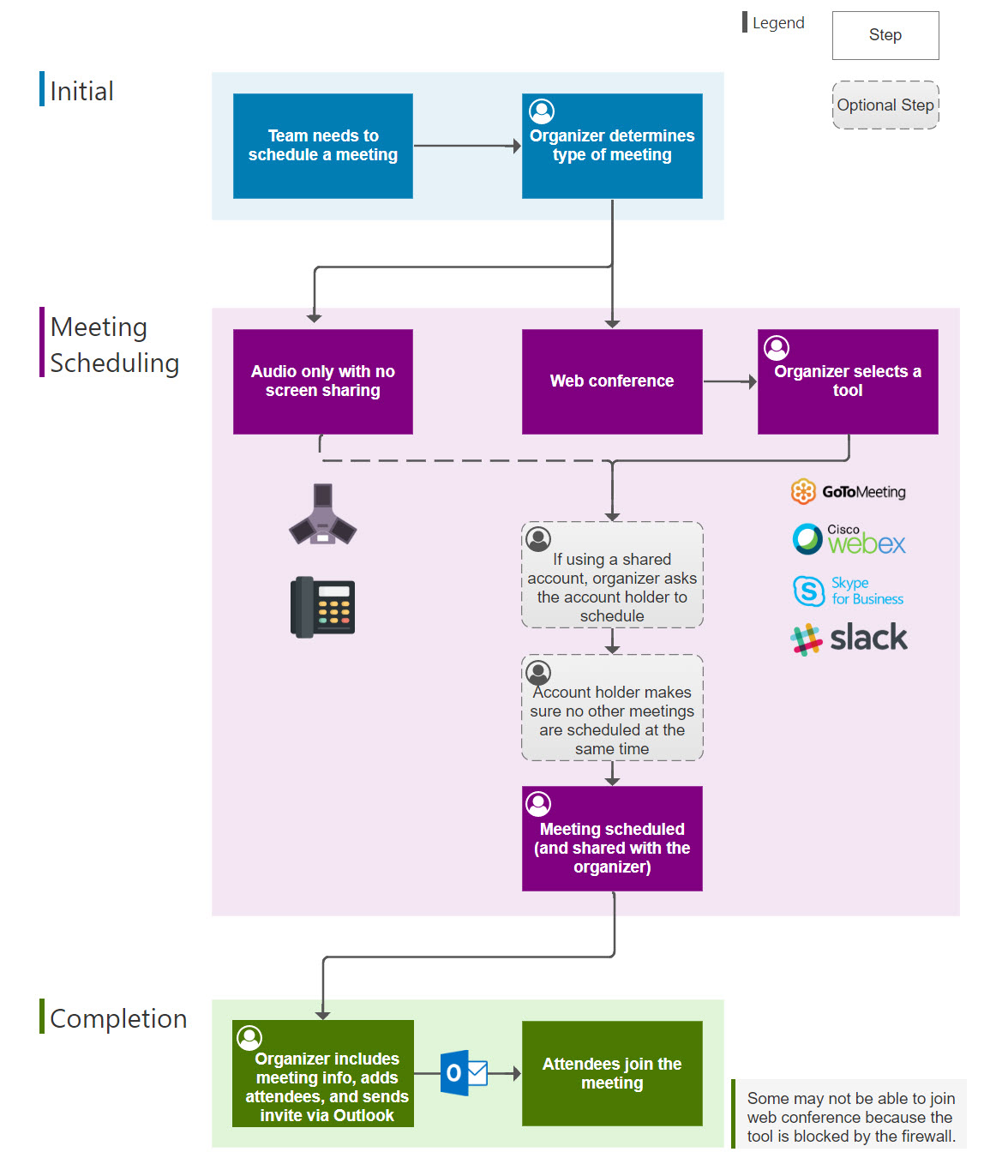In this blog post, I’d like to share:
- What I have learned about OCM and its importance
- The ADKAR® Model for successful OCM
- How UX and OCM are closely related and connected
- A case study of implementing UX and OCM together
I enjoy being a User Experience (UX) Researcher. I like working with diverse user groups, learning about their needs, understanding their frustrations and challenges, coming up with solutions to address their pain points, and usually making corresponding design recommendations to improve various products that they use. It is rewarding to know that I can help improve people’s lives.
UX is an umbrella of multiple career pathways and skillsets, as Cory Lebson and other book collaborations described in The UX Careers Handbook. Therefore, UX is also a fascinating field, providing me with continuous learning and professional growth opportunities. Over the years of working on numerous projects, I’ve focused on user research and evaluation, information architecture, interaction design, content strategy, content writing/information design, technical communication, human factors, and accessibility.
Getting into OCM
AIS values continued learning, sharing, and technical excellence and the leadership encourages employees to be life-long students. Since I joined AIS in 2018, I have had many opportunities to grow professionally, which has helped me take more job roles and responsibilities that are beyond the traditional UX pathways and skillsets.
One of the new disciplines that I have learned, through internal and external projects, training, and learning, is OCM. As I learn more about it, I see more relevance and connections between UX and OCM. I increasingly believe becoming proficient with OCM not only benefits me as a UX Researcher to gain a new skill set, but also helps the users I work with, contributes to overall project success, and better serves my clients.
Importance of OCM
The Greek philosopher Heraclitus said, “change is the only constant in life.” Constant change is true not only in people’s personal lives but also in organizations where digital transformation (DX) continually occurs. International Data Corporation (IDC) stated that “spending on the DX of business practices, products, and organizations will continue at a solid pace despite the challenges presented by the COVID-19 pandemic” (Research Press Release, May 20, 2020).
According to Prosci, the leading change management research and development company, every organizational change includes the technical and people sides. Changes can fail, even though they meet technical requirements and milestones. Organizations must implement change management, which Prosci defines as “the process, tools, and techniques to manage the people side of change to achieve a required business outcome.” It’s worth mentioning that change management is not only crucial in a business environment but also in people’s personal lives.
According to Prosci research, compared with initiatives with poor change management, efforts with excellent change management are:
- Six times more likely to achieve project objectives
- Five times more likely to stay on or ahead of schedule
- Twice more likely to stay on or under budget
(Learn more: An Introduction to Change Management – download required)
Prosci ADKAR Model
Prosci specified that successful OCM is rooted in the change of individuals in the organization, one person at a time. To guide people to embrace, adopt, and sustain any change, Prosci founder Jeff Hiatt created the simple, but robust and effective ADKAR Model. ADKAR represents five building blocks for successful OCM:
- A: Awareness of the need for change – “I get what is happening and why.”
- D: Desire to support and participate in the change – “I choose to participate.”
- K: Knowledge of how to change – “I know what to do and how to do this.”
- A: Ability to implement required skills and behaviors – “I can do this.”
- R: Reinforcement to sustain the change – “I will continue to do this.”
All these five elements must be in place before people change, and a change succeeds.
Relevance and Connection between UX and OCM
The ADKAR model focuses on the people side of change. UX centers around people, process, and technology. Both UX and OCM involve closely working with people. Through self-learning but primarily through collaborating on internal and external projects with my colleague Tacy Holliday, who specializes in OCM, I have learned about OCM basics and realized the relevance and connection between the UX and OCM disciplines.
I have found my UX background and skills help me understand OCM and its importance, which has led me to take advantage of my UX knowledge to OCM implementation. Equipped with both UX and OCM knowledge, UX practitioners can not only help improve the UX of a product but also help individuals adopt the product that they have helped evaluate and progress, which benefits these users and their organizations.
Some advantageous UX skills that I have found useful in OCM implementation include:
- Using various user research methodologies, such as surveys, interviews, and focus groups will collect people’s feedback and understand their needs, pain points, concerns, and challenges
- Practicing active listening and empathy with various user groups to improve people’s overall experiences while minimizing bias
- Clear communication and frequent engagement with people, including using typical UX artifacts, such as wireframes, diagrams, or other graphics
- Problem-solving skills to timely address people’s concerns, provide support and make recommendations
Case Study: Implementing UX and OCM Together
UX and OCM are naturally connected, and some activities in both areas can be carried out without additional efforts. This was proven successful when we helped a client, ACA Compliance Group, adopt Microsoft Teams (Teams) across their offices in various states of the US, the UK, and China. Our project team included a Project Manager, Cloud Engineer, Change Manager, UX researcher, and Business Analyst. During our 16-week engagement, we helped ACA achieve a 90% adoption rate of Teams, and ACA was well-positioned to achieve a 100% adoption rate by the target date.
At the beginning of the project, we conducted interviews and focus groups. We asked not only typical UX questions that focused on people’s needs, pain points, and challenges, but also requested typical OCM questions that assessed people’s readiness, awareness, and desire for change. The first two letters in the ADKAR model. We also collaborated around the other three ADKAR building blocks:
- K: Knowledge: Conducting in-person and online training sessions to help individuals learn about Teams
- A: Ability: Holding office hours to share Teams tricks and tips and answer people’s questions about using Teams in real situations
- R: Reinforcement: Working with key stakeholders and making recommendations to reinforce and sustain Teams adoption and use
As a project team, our collaboration and having a shared understanding of the individuals that we worked with was crucial for us to support each other and ensure the overall project success.
We also used artifacts that came out of UX to illustrate the ideal change outcome and increase an individual’s desire for the change. For example, through user research, we learned and documented the existing difficult process for ACA employees to organize, schedule, and attend meetings, which involved various web conference tools, specific people, and high incurred costs (Figure 1). Then we illustrated how Teams could streamline and simplify this process (Figure 2). UX artifacts like these helped ACA employees see how Teams could help with their daily work, which increased their desire to adopt Teams. Individuals became excited with Teams’ features and capabilities and looked forward to using it. They no longer felt that Teams was another “cool tool” that they were forced to use, and that took time to learn.
Figure 1: Organizing and Scheduling Meetings Before Adopting Teams
Figure 2: Organizing and Scheduling Meetings After Adopting Teams
In summary, implementing both UX and OCM benefits both end-users and organizations that we work with. OCM is also a relevant and crucial discipline for UX practitioners to learn about and become more proficient with, helping us grow professionally. This is especially the case for those who have been in the UX field for years and are looking for new ideas and adventures beyond traditional UX pathways and skillsets.
For More Information
If you are interested in learning more:
- About OCM and ADKAR model, visit Prosci website
- Details about how we helped ACA successfully adopt Teams, visit Tacy’s blog post: Microsoft Teams Adoption Boosts Collaboration for ACA Compliance Group
- About how AIS can help you with UX, OCM, or other business needs, contact AIS








